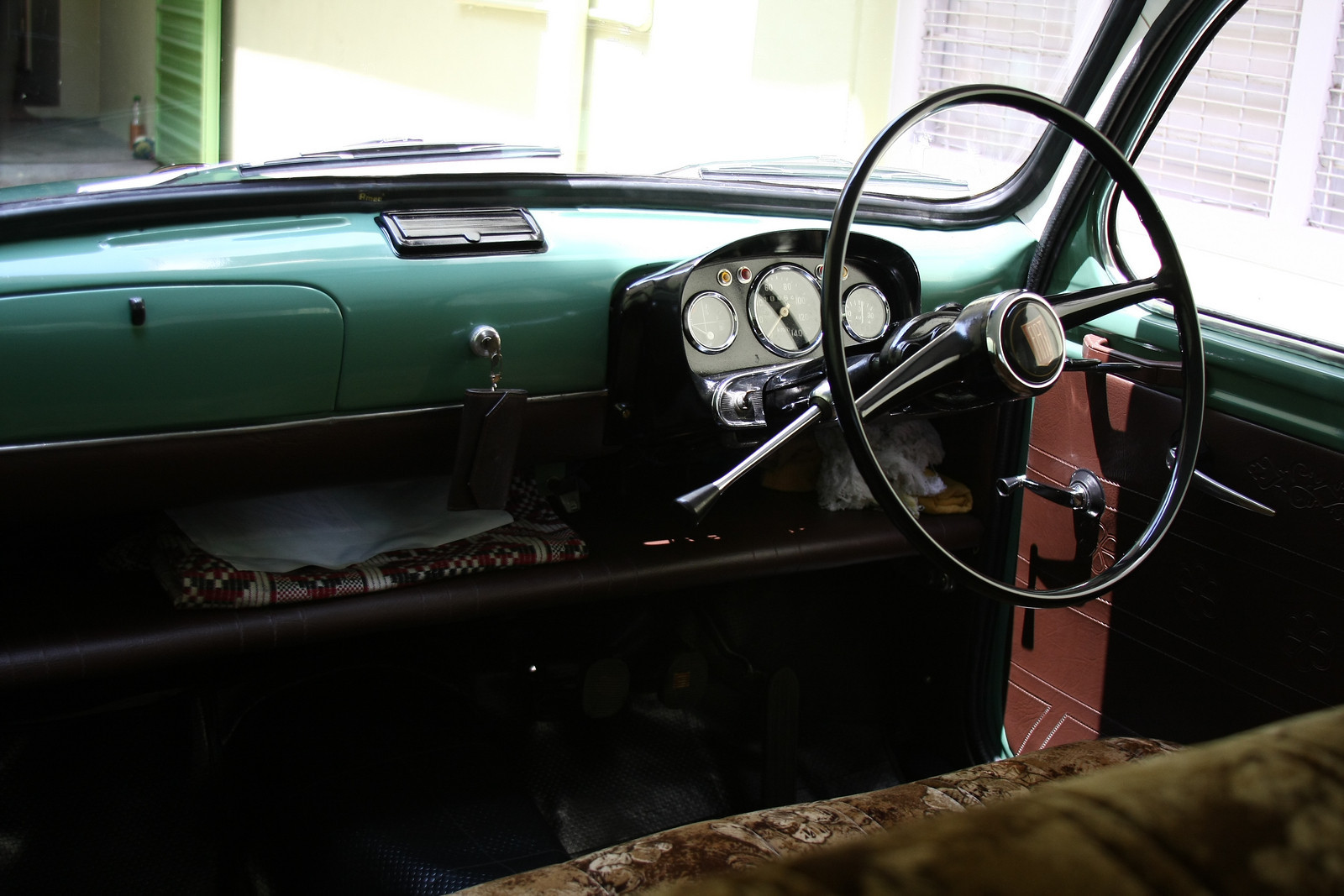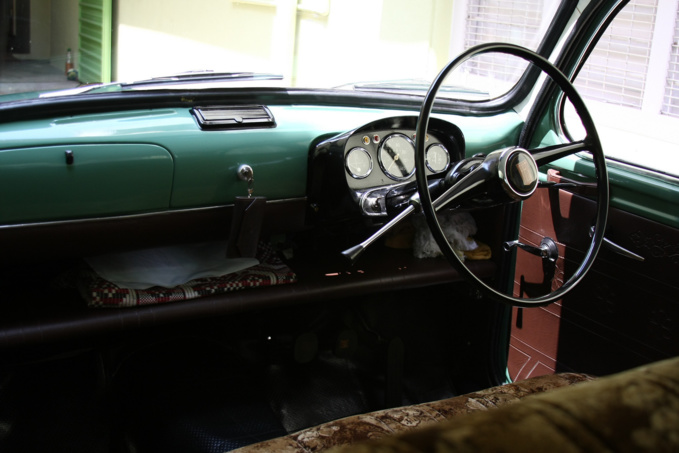During the first seven months of 2016, South Korea lost the fifth place among the world's largest automakers, giving way to India. Seoul dropped out of the top five for the first time in the past 12 years.
India forced South Korea out from fifth place the world's largest manufacturers of cars in the first seven months of this year. This was reported by the South Korean Yonhup publication citing statistics.
During the first seven months, South Korean manufacturers produced 2.55 million vehicles, while their Indian colleagues released 2.57 million. Statistics for August shows that South Korean manufacturers have released 217 097 cars, and Indian - 387 704.
The agency notes that South Korea has lost the fifth position for the first time in 12 years. Seoul had been kicked out from the world's largest manufacturers in 2002, but managed to win the position back in 2005.
If this trend continues throughout the year, South Korea will lose the fifth place among the world's largest automakers by the end of the year, the agency said.
Last year, annual volume of production of cars in South Korea totaled 4.55 million. In India, the figure for the end of last year was equal to 4.12 million.
As for Europe, apparently Spain will be the European leader of 2016. This country has become one of the most attractive European states for investment in car making thanks to the labor law reform and low payment of labor.
Researchers calculated that Spain produced a record number of cars (2.7 million) in the past year, of which 80% were exported. Now, the country ranks second by car production in Europe, giving way only to Germany, and certainly goes ahead of France and the UK. The global index places the Spanish car industry on the eighth place.
Such a surge in the industry is obliged to a number of factors.
In 2012, the government simplified the labor law, which, in turn, significantly accelerated settlements of disputes with labor unions. On the other hand, German Volkswagen plans to invest 1 billion euros in its factory located in Pamplona, Spain. The investments represent an opportunity to expand the staff by 500 workers, thus bringing it up to 4.5 thousand.
Currently, the American company Ford is also expanding its production at its factory in Valencia. Until 2020, the Americans are going to make inject 2.3 billion euros in the Valencian plant. This will make it the enterprise the largest owned by Ford in Europe.
Meanwhile, IHS expects that sales of passenger cars in the world will grow to 89.8 million units in 2016.
Automobile US market, supported by low interest rates on loans and low gasoline prices, will remain strong. Although interest rates will rise slightly, the conditions for the purchase will be good to allow the market to continue to grow in 2016 and 2017. IHS still sees strong potential strengthening the US economy and employment, which will lead to an increase in the US market to 18 million units in the next two years.
In Western Europe, growth momentum is also strong, and is well above expectations even after restoration in 2015. The current forecast of 2.5-3.0% growth can even be revised upward. Nevertheless, some European markets has already peaked.
Optimism about sales activity in the Chinese market has increased sharply since the government announced measures to reduce tax on purchase of small cars. Nevertheless, the stock market volatility still may deter some buyers. Despite the slowdown in the Chinese economy, IHS Automotive now expects growth in passenger car sales by 5-6% in 2016. This is enough to increase sales by more than 1.3 million units.
For the Asia-Pacific region, 2016 will be a year of transition from a disappointing sales decline of recent years to a new growth. Sales in the key markets of Thailand and Indonesia will be rising in the second half of 2016, and in 2017. Car market in India, according to IHS forecast, will also accelerate, as lower energy prices and falling interest rates on car loans will allow returning to double-digit growth rates for the first time since 2010.
source: yonhapnews.co.kr, wsj.com,
India forced South Korea out from fifth place the world's largest manufacturers of cars in the first seven months of this year. This was reported by the South Korean Yonhup publication citing statistics.
During the first seven months, South Korean manufacturers produced 2.55 million vehicles, while their Indian colleagues released 2.57 million. Statistics for August shows that South Korean manufacturers have released 217 097 cars, and Indian - 387 704.
The agency notes that South Korea has lost the fifth position for the first time in 12 years. Seoul had been kicked out from the world's largest manufacturers in 2002, but managed to win the position back in 2005.
If this trend continues throughout the year, South Korea will lose the fifth place among the world's largest automakers by the end of the year, the agency said.
Last year, annual volume of production of cars in South Korea totaled 4.55 million. In India, the figure for the end of last year was equal to 4.12 million.
As for Europe, apparently Spain will be the European leader of 2016. This country has become one of the most attractive European states for investment in car making thanks to the labor law reform and low payment of labor.
Researchers calculated that Spain produced a record number of cars (2.7 million) in the past year, of which 80% were exported. Now, the country ranks second by car production in Europe, giving way only to Germany, and certainly goes ahead of France and the UK. The global index places the Spanish car industry on the eighth place.
Such a surge in the industry is obliged to a number of factors.
In 2012, the government simplified the labor law, which, in turn, significantly accelerated settlements of disputes with labor unions. On the other hand, German Volkswagen plans to invest 1 billion euros in its factory located in Pamplona, Spain. The investments represent an opportunity to expand the staff by 500 workers, thus bringing it up to 4.5 thousand.
Currently, the American company Ford is also expanding its production at its factory in Valencia. Until 2020, the Americans are going to make inject 2.3 billion euros in the Valencian plant. This will make it the enterprise the largest owned by Ford in Europe.
Meanwhile, IHS expects that sales of passenger cars in the world will grow to 89.8 million units in 2016.
Automobile US market, supported by low interest rates on loans and low gasoline prices, will remain strong. Although interest rates will rise slightly, the conditions for the purchase will be good to allow the market to continue to grow in 2016 and 2017. IHS still sees strong potential strengthening the US economy and employment, which will lead to an increase in the US market to 18 million units in the next two years.
In Western Europe, growth momentum is also strong, and is well above expectations even after restoration in 2015. The current forecast of 2.5-3.0% growth can even be revised upward. Nevertheless, some European markets has already peaked.
Optimism about sales activity in the Chinese market has increased sharply since the government announced measures to reduce tax on purchase of small cars. Nevertheless, the stock market volatility still may deter some buyers. Despite the slowdown in the Chinese economy, IHS Automotive now expects growth in passenger car sales by 5-6% in 2016. This is enough to increase sales by more than 1.3 million units.
For the Asia-Pacific region, 2016 will be a year of transition from a disappointing sales decline of recent years to a new growth. Sales in the key markets of Thailand and Indonesia will be rising in the second half of 2016, and in 2017. Car market in India, according to IHS forecast, will also accelerate, as lower energy prices and falling interest rates on car loans will allow returning to double-digit growth rates for the first time since 2010.
source: yonhapnews.co.kr, wsj.com,



















